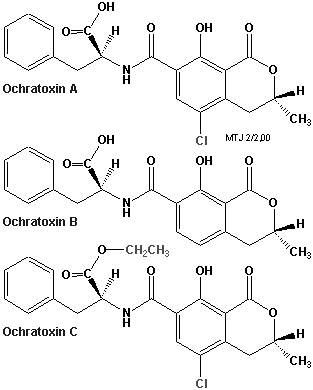), a naturally occurring compound created during the ripening of several fruits.
Although manufactures label coffee as "naturally decaffeinated" the truth is that the solvent is produced synthetically. In pure form ethyl acetate exists as a clear volatile liquid with a fruity smell. It is also used in a number of industries including perfumes, nail removers, and in the storage of insects (entomology).
What is OTA?
Produced by a mycotoxin Aspergillus ochraceus, OTA is short for "Ochratoxin A". Thus far, researchers have identified three distinct strains of the toxin: ochratoxin A, B and C, though only ochratoxin A has been associated with coffee.
OTA has been under extensive research over the past decade, since studies have shown to cause renal tumors in animal models. Currently the toxicity of OTA has been debated, since studies have shown its inability to form reactive intermediates in humans.
OTA formation in coffee has been correlated with poor manufacturing practices, namely: poorly stored cherries, improper drying, and rewetting of the beans on drying patios. Cases have also been found in poorly processed decaffeinated coffee samples.
Although OTA exposure from coffee is minor, it accounts for an estimated 4% - much behind its occurrence in other products, including cereals (44%), wine (10%), and beer (7%).
